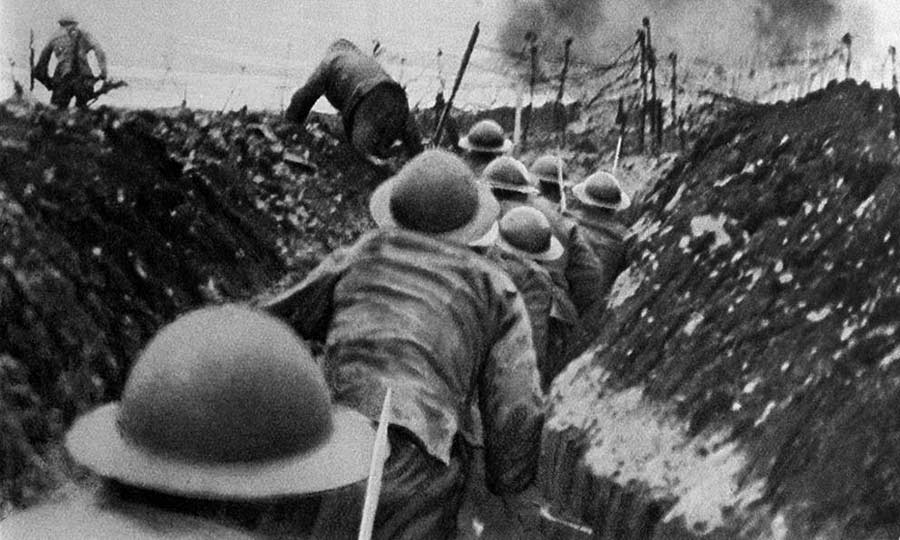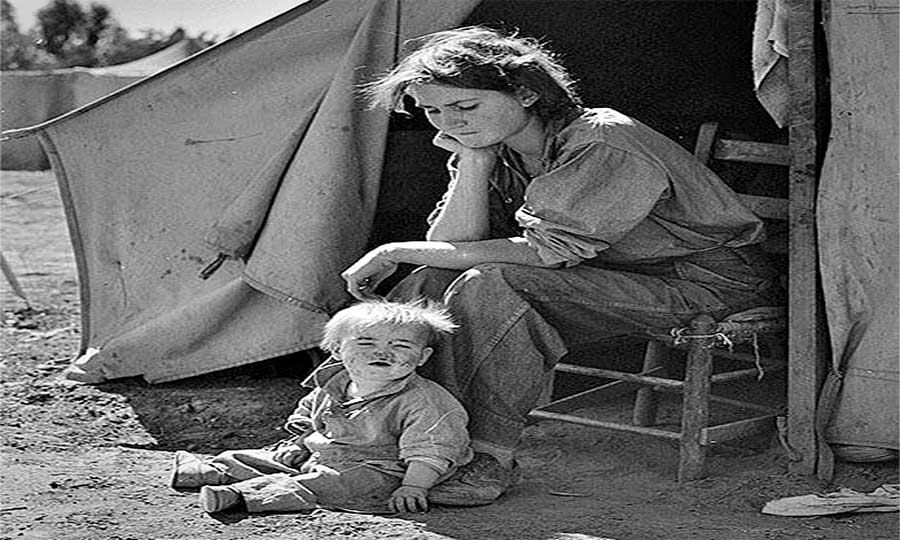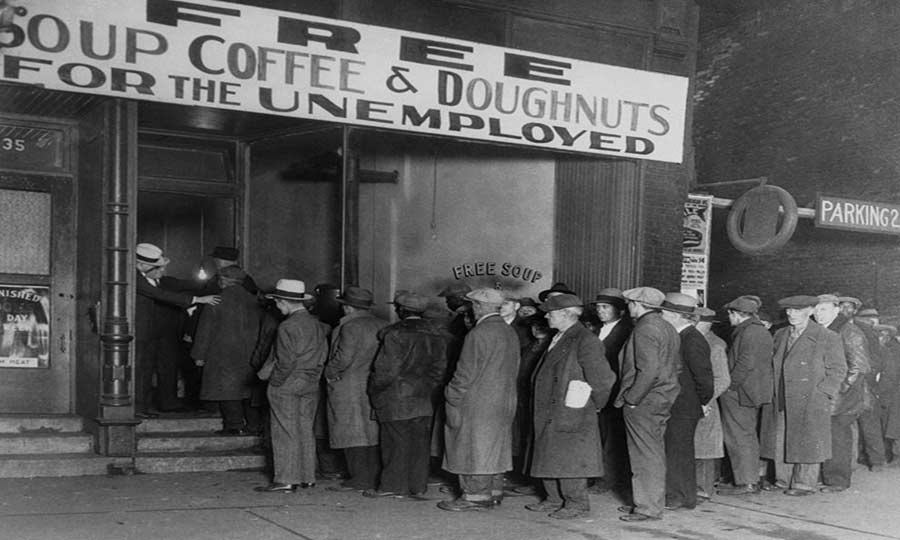Por Carlos Carcione
La crisis del sistema capitalista que se viene desarrollando desde 2008 y que se profundizó a niveles dramáticos a partir de la pandemia, puso a la orden del día la comparación con el llamado Crack del 29. Una comparación que hacen organismos internacionales como el FMI, académicos, analistas e intelectuales más o menos progresistas, para advertir sobre la profundidad de la crisis actual. Pero, ¿qué fue la crisis del 29, ¿cómo y por qué se produjo?, ¿qué derivaciones tuvo, qué enseñanzas deja? Aquí una mirada desde la militancia socialista revolucionaria.
En octubre de 1929 estalla la que hasta ahora era la mayor crisis económica de la historia del capitalismo. El 24 de ese mes, que pasaría a la historia como Jueves Negro, se desploma la bolsa de Wall Street y las principales acciones pierden un promedio del 40% de su precio. Cinco días después, el martes 29, el crack se repite abriendo una crisis que llegaría a todo el mundo y duraría casi una década. Este fenómeno, conocido como la Gran Depresión solo comenzaría a revertirse a partir de la Segunda Guerra Mundial. El crack del mercado de valores fue seguido de un desplome de la banca y luego de una caída enorme de la producción, el empleo y la inversión. El número de quiebras de los bancos alcanzó un promedio anual de 600 instituciones durante la década del 20, mientras que en la década del 30, luego del crack bursátil, alcanzó un promedio anual de 1.350 bancos quebrados. Este fenómeno obtuvo su máximo nivel en 1933 cuando quebraron unos 4.000 bancos. Un tercio de los bancos estadounidenses fueron a la quiebra durante el periodo 1930-1933. El desempleo se disparó al 25% del total de la fuerza laboral y decenas de miles de pequeños “inversores” quedaron en la ruina, el comercio mundial se redujo a la mitad y se desarrollaron fenómenos proteccionistas que aceleraron la expansión de la crisis al resto del mundo. Las escenas de pánico, de suicidios en plena Wall Street, largas filas de desocupados buscando un empleo o un plato de comida en todas las ciudades del país del norte, los rostros tristes por el hambre de madres con sus niños -magníficamente retratados por Dorothea Lange- son la expresión gráfica de ese período. El estallido de esa crisis es el símbolo de que mientras el crecimiento económico provoca mayor desigualdad social, las crisis del sistema también se abaten sobre los más desprotegidos.
“Los Felices Veinte”
Como en la bancarrota de 2008, muy pocos previeron el crack del 1929. “Los Felices Veinte” o los “Alegres Veinte”, comparables a la Belle Epoque europea, desde fines del siglo XIX hasta el inicio de la Gran Guerra, fueron un período de prosperidad y fiesta perpetua para los sectores privilegiados en Estados Unidos. Porque a diferencia de sus aliados europeos en la Primera Guerra Mundial, ese país salió fortalecido, mientras que Gran Bretaña, imperio dominante hasta entonces, y Francia salieron profundamente agotados de la confrontación armada; entre tanto Alemania estaba agobiada por las deudas de guerra, las sanciones y reparaciones a las que fue sometida por los vencedores. Éste sería un período dorado caracterizado por fuertes inversiones especulativas, crédito fácil que alimentó un endeudamiento de las familias que se volvería impagable, proceso que tocaría techo en octubre de 1929 tras la devastadora caída de la Bolsa de Wall Street. Las dramáticas consecuencias de la crisis económica de 1929 no tardarían en desencadenarse: incalculables pérdidas económicas, más de 4.000 bancos en bancarrota y millones de familias trabajadoras en la más completa ruina. La coyuntura del alza de los mercados especulativos, denominada Big Bull Market que se desarrolló en los años previos al derrumbe, descansaba sobre una base sumamente frágil. El crack deja a la vista el desastre social que mencionábamos más arriba.
Pero la crisis financiera no fue la causa de esa depresión prolongada a lo largo de una década; por el contrario, resultó el síntoma más evidente de una crisis económica y social y una disputa interimperialista por la dominación mundial que venía gestándose desde hacía tiempo y que no resolvió la Primera Guerra. Al final de esa crisis quedó reconfigurado un nuevo mapa geopolítico global, Segunda Guerra Mundial mediante.
La dimensión geopolítica surgida de la Gran Depresión
En la primavera de 1916 Lenin escribe en Suiza su obra El imperialismo fase superior del capitalismo que tendrá su primera edición en el otoño de ese año. En ese trabajo realiza una verdadera radiografía de las transformaciones del capitalismo como sistema social, pero también desde el punto de vista de los estados nacionales más desarrollados. En esta obra, el que apenas un año después sería el principal dirigente de la Revolución Rusa, estudia lo más meticulosamente que le fue posible con los datos con los que contaba en medio de la Guerra, las transformaciones en la economía de Inglaterra, Alemania y Estados Unidos, los tres países más poderosos entonces. La caracterización de la transformación en capitalismo monopolista del capitalismo mercantil anterior y el pronóstico geopolítico hecho en 1914 de que el período abierto derivaba en una época de crisis, guerras y revoluciones, encuentra bases materiales en aquella transformación de la estructura económica del capitalismo.

La salida de la primera gran crisis del capitalismo de la que se tiene registro, ocurrida en 1870, creo la condiciones para el desarrollo de Alemania como un país de capitalismo moderno que para sostener su desarrollo industrial necesitaba cada vez más mercados y control colonial que debía arrancarle al dominante Reino Unido. Se generó una disputa interimperialista por el control de los mercados y esos espacios coloniales que derivo en la Gran Guerra, con su secuela de destrucción de fuerzas productivas, capital y millones de muertos. Ya para finales de la guerra, en 1918 apareció la anterior gran pandemia, la Gripe Española. Llevada a Europa por las fuerzas militares de Estados Unidos, que solo se sumó claramente a la guerra cuando ya estaba decidida.
El intento de Alemania de acceder a colonias y nuevos mercados para sus mercancías industriales fue derrotado, pero el costo fue altísimo para el imperio inglés, hegemónico hasta entonces. Mientras que una participación expectante y pasiva durante gran parte de la conflagración permitió a Estados Unidos salir indemne y creciendo de ese conflicto. Sin embargo, las contradicciones que llevaron a la guerra no fueron resueltas. Inglaterra no podía seguir manteniendo su antigua posición de primacía y Estados Unidos a pesar de ser la primera economía mundial desde entonces, no quiso o no pudo ocupar el lugar que estaba dejando vacante el Reino Unido.
Estados Unidos: asenso y decadencia
Simultáneamente el pronóstico de Lenin continuaba cumpliéndose. No solamente había estallado la guerra, también apareció la primera revolución obrera triunfante, la Revolución Rusa. El triunfo de la república de los Soviet en la guerra civil en su tierra, agregaba un fuerte elemento de cuestionamiento internacional al capitalismo. La Revolución Alemana de 1918 que se volvió a plantear en 1923, permitía constatar lo certero de ese pronóstico. Aunque las derrotas en las revoluciones en Alemania, lo mismo que la del Biennio Rosso en Italia entre 1919 y 1920, entre otros procesos, facilitarían la aparición del fascismo y prolongaron la crisis del sistema. El agotamiento de los países europeos triunfantes en la guerra; la situación de postración, miseria y hambre del movimiento de masas alemán impuestos por el Pacto de Versalles; el surgimiento del nazismo; los errores primero y la traición stalinista posterior al proceso alemán, como ocurriría luego en la Guerra Civil Española, abrieron paso además del fortalecimiento del fascismo y la llegada al poder de Hitler, al rearme y a la dinámica hacia una nueva guerra.

El crecimiento económico de Estados Unidos casi sin interrupciones por medio siglo se topa con el Crack del 29 y la Gran Depresión que se venía incubando en el período previo, abriendo una década de mayor crisis, inestabilidad y polarización social. Pero su situación de país dominante lo obliga a tomar un papel protagónico cuando se desata la Segunda Guerra Mundial. El final de la guerra, al igual que ocurrió al fin de la Primera, presenta una situación en la que tiene que asumir su hegemonía, y con la cooperación de la URSS estalinista liquida las revoluciones abiertas en varios países de Europa, aunque no puede impedir el final del mundo colonial. Sin embargo, este país se instala como la potencia capitalista hegemónica.

En el período posterior a la Segunda Guerra, se da la recuperación. Este tiempo conocido como la Edad de Oro se mantiene hasta finales de los 60 y principio de los 70. La recuperación tiene razones económicas y políticas. En primer lugar, la destrucción monumental de fuerzas productivas durante el periodo de la Gran Depresión y la propia guerra que exigió un enorme esfuerzo de reconstrucción. Pero por otra parte, una vez derrotado el nazismo se repite el ascenso revolucionario del movimiento de masas. Este proceso pudo ser desviado y en algunos casos congelado por el papel contrarrevolucionario del stalinismo. Un tercer elemento que marcó la mutación destructiva del sistema, fue el impulso industrial asentado en una fuerte industria armamentista. Pero el dinamismo del sistema llega apenas hasta finales de los 60.
La crisis de los petrodólares, la derrota en la guerra de Vietnam y las crisis posteriores, marcan el comienzo de la decadencia de Estados Unidos. Decadencia que no puede evitar a pesar del neoliberalismo, y ni siquiera con la implosión de la URSS y su reconversión al capitalismo, ni con el dinamismo que le permitió la restauración capitalista en China o los avances tecnológicos. Esta caída se manifiesta en las nuevas crisis recurrentes en los últimos 50 años. En este sentido, la crisis del 2008 y su posterior evolución dejan en evidencia el ocaso de su hegemonía. Se ha terminado el mundo de posguerra. Aunque Estados Unidos sigue siendo el país más poderoso de la tierra, su hegemonía está cuestionada, es disputada por un joven capitalismo ascendente con vocación imperialista. Pero sobre todo por un colosal ascenso de la lucha del movimiento de masas.
El agotamiento del sistema
Entre 1845 y 1846 Marx y Engels, como parte de su trabajo de ruptura con el idealismo y la economía política clásica, elaboran La Ideología Alemana. En el texto afirman que, llegado un punto de su desarrollo, las fuerzas productivas del capitalismo se convierten en su opuesto, en fuerzas de destrucción. Para la misma época, en el Manifiesto Comunista señalan que la justificación histórica de toda formación social está dada por el desarrollo de sus fuerzas productivas y que cuando estas cesan de desarrollarse es el tiempo histórico del reemplazo de la vieja sociedad por una nueva. Casi noventa años después, en el Programa de Transición, documento fundacional de la IV Internacional, un año antes del estallido de la Segunda Guerra Mundial y 10 después del Crack del 29, Trotsky afirma que ese momento ha llegado hace tiempo. Desde entonces en adelante las condiciones del reemplazo de una sociedad decadente por una nueva no cesan de madurar. Por el contrario, afirma, esas condiciones se están pudriendo.
Si al final de la Segunda Guerra Mundial, la amenaza sobre la humanidad era un holocausto nuclear, hoy en su decadencia el sistema se vuelve más depredador y parasitario. Con un extractivismo feroz destruye el planeta, agota fuentes de recursos limitados, vuelve estériles las tierras fértiles y acaba con elementos vitales como el agua. Intenta por todos los medios aumentar la superexplotación del trabajo y eleva a niveles sin precedente la desigualdad y el capital ficticio, el desperdicio de recursos naturales en una producción anárquica y dispendiosa. Provoca pandemias sociales como las migraciones forzadas y catástrofes naturales que amenazan la subsistencia de la vida misma.
En estas condiciones del capitalismo, solo resta esperar crisis dramáticas como la del 29, la de 2008 y la actual. Dos guerras mundiales; revoluciones triunfantes, derrotadas y congeladas; decenas de guerras regionales; expropiación de derechos conquistados por los trabajadores y las masas de todo el mundo. Hambre, miseria y desocupación, además de una creciente destrucción del planeta y de sus recursos vitales; genocidios con los que provoca una orgía de sangre, son el testimonio irrebatible del agotamiento del sistema capitalista. Cada vez es más actual la urgencia de reemplazar de manera revolucionaria un sistema que no tiene recuperación por uno nuevo, el socialismo.

Pandemia, crisis, nuevas revoluciones y enfrentamientos interimperialistas
La pandemia de COVID-19, volvió a poner negro sobre blanco el agotamiento del sistema capitalista. A esta altura del desarrollo de la pandemia hay consenso en que la voraz expansión capitalista ha facilitado el salto del virus de la vida silvestre a la de la sociedad humana. La ampliación de la frontera extractivista, modo preferido de producción del capital, es la razón.
Pero a pesar de este modo de producción suicida, expoliador y destructor de la naturaleza y el hombre; todos los elementos presentes en el Crack del 29 están vigentes y más agudos en este período. Un imperialismo agotado y exhausto con su gasto militar comiéndole las entrañas. Una potencia ascendente amenazadora, más que por su propia voluntad por la lógica de la historia. Crisis económica sin precedentes confirmada por los ruidos de este final de 2020 otra vez en Wall Street, donde el capital ficticio ha llegado a niveles veinte o más veces superiores a la economía productiva, y el pánico que transpiran los movimientos de la clase dominante.
Por otra parte, desde hace un año, un incontenible ascenso del movimiento de masas recorre el mundo como el fantasma comunista que recorrió Europa en otros tiempos. En los cinco continentes, empezando por el principal país de la tierra, Estados Unidos, salen a luchar por los derechos que saben que merecen y obtienen victorias, parciales es cierto, pero victorias al fin. La historia no se repite. Pero las analogías son útiles para encontrar elementos comunes del pasado con los que leer lo más acertadamente posible la realidad actual. Por eso cuando miramos desde la crisis de hoy, el rostro senil y decrépito del imperialismo en todas sus vertientes civilizatorias, tanto occidental como oriental y del capitalismo como sistema; lo que vemos es la imagen macabra que nos devuelve el espejo de la Gran Depresión y del Crack del 29. Nuestra tarea es construir la herramienta política revolucionaria con la que los trabajadores como clase, los jóvenes y las masas populares puedan liquidar este régimen corrupto y conquistar la emancipación de la humanidad.




